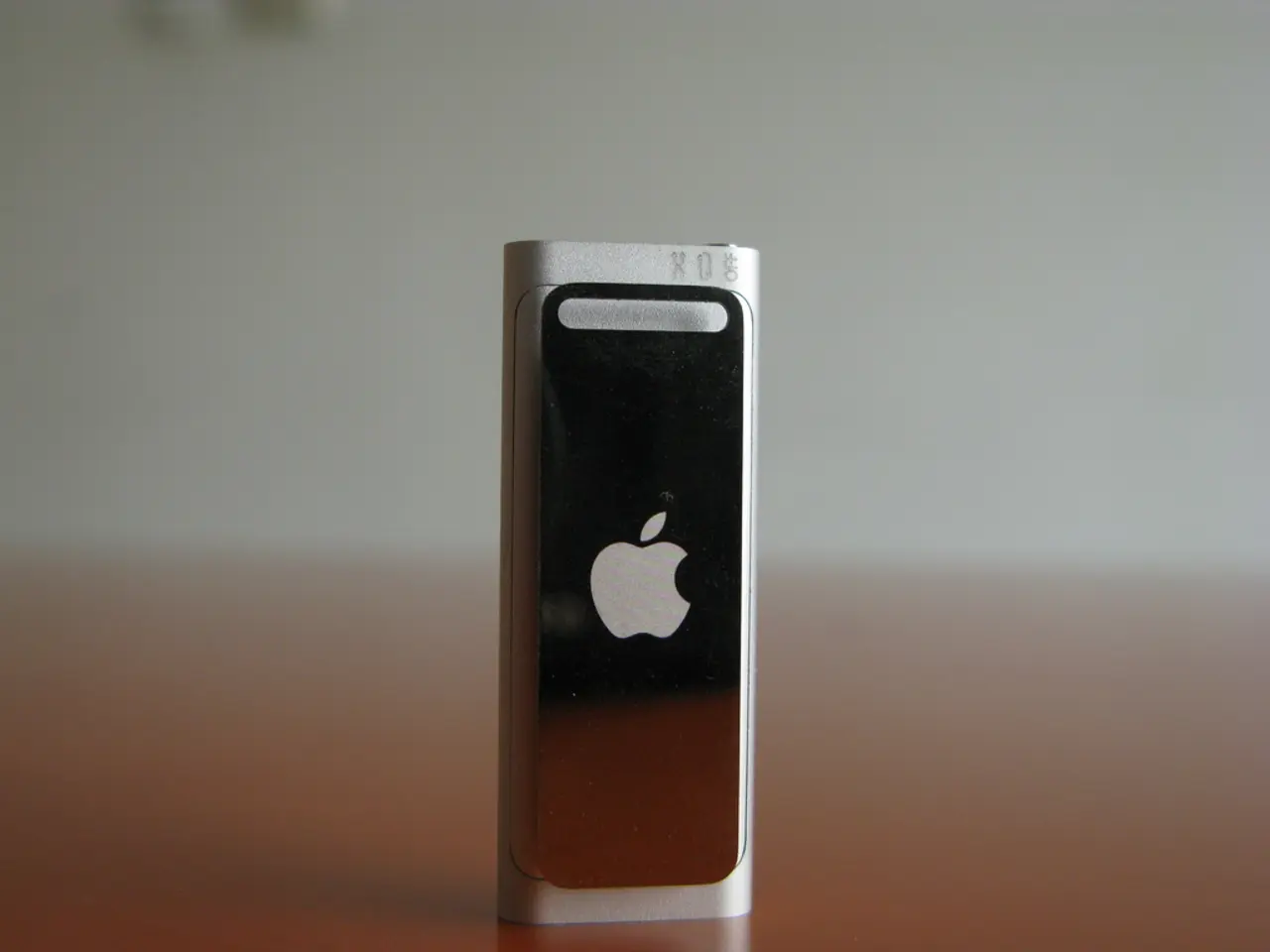Introducing u-blox's energy-efficient GNSS chip for wearable technology devices
The Swiss technology company u-blox has recently introduced a groundbreaking product - the UBX-M10150-CC, an ultra-low-power Global Navigation Satellite System (GNSS) chip. This chip, designed to revolutionize the design of compact wearable devices like sports and smart watches, promises a unique combination of size, efficiency, and performance.
The UBX-M10150-CC comes in the smallest form factor, with dimensions of only 2.39 x 2.39 x 0.55 mm. This minuscule size not only allows for the creation of sleek and slender product designs but also facilitates easy integration into various wearable devices.
One of the standout features of the UBX-M10150-CC is its adaptability to signal conditions. This adaptation enables a reduction in power consumption of at least 50 percent while maintaining position accuracy. This feature, coupled with the chip's highly accurate positioning, significantly prolongs the battery life of wearable devices.
The UBX-M10150-CC also features pioneering LEAP technology, offering low energy accurate positioning with just 10mW power consumption. This technology ensures precise positioning while saving substantial amounts of power, further contributing to the extended battery life of wearable devices.
The UBX-M10150-CC also caters to aquatic sports enthusiasts with a mode for open water swimming. This feature, along with its compact size and low power consumption, makes it an ideal choice for wearable devices used in water sports.
The UBX-M10150-CC's application processor can be set to deep sleep mode, allowing for internal data batching. This feature reduces overall system power consumption by excluding heavy signal processing on the application processor.
Moreover, the UBX-M10150-CC allows for automatic external LNA switching, saving additional power. This feature, combined with the deep sleep mode, results in a significant reduction in power consumption.
First samples of the UBX-M10150-CC are available now for immediate integration and testing by manufacturers. The chip also comes with Android and SUPL support for easy integration into various devices.
Another notable feature is the chip's upgradeable firmware, allowing for the introduction of new features and capabilities over time. However, specific details about the timeline or conditions for the introduction of these new features are not currently available.
The Ultra-Low-Energy GNSS chip UBX-M10150-CC was developed last year by u-blox. While the specific benefits of the upgradeable firmware or Android and SUPL support are not explicitly stated, they undoubtedly add to the chip's versatility and potential for future developments.
The UBX-M10150-CC also includes features such as multipath mitigation for improved position accuracy in challenging urban environments. This feature ensures that the chip performs optimally in a variety of conditions, making it a reliable choice for wearable device manufacturers.
In conclusion, the UBX-M10150-CC is a significant leap forward in the field of compact wearable devices. Its small size, low power consumption, and adaptability make it an ideal choice for manufacturers looking to create sleek, efficient, and high-performing wearable devices.








